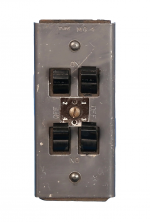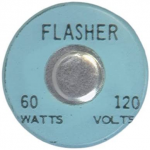There are 13 single-pole breakers on the right side; there are 5 single-pole breakers on the left side, along with 4 double-pole ones. Indeed, the black wires (hots to the breakers) along the right side are all in phase, as are the red ones. Same is true on the 5 on the left side; but the phases are reversed, the blacks on the left side being out of phase (i.e. 240vac measured between them) with the blacks on the right side (and same for the reds). Might be ok. Might not be. Hard to tell, since the sheaths are gone.
I suppose there are tricks I can do to try to identify MWBC pairs (and their corresponding neutral). Turn on everything in the house. Turn off all the breakers - except one. Use clamp-on ammeter to find the corresponding neutral that has current on it and label the wire with tape (1N or something), Label the hot leg as 1A. Rinse and repeat ... If another breaker causes current on the same neutral, that's the other side of the MWBC.




